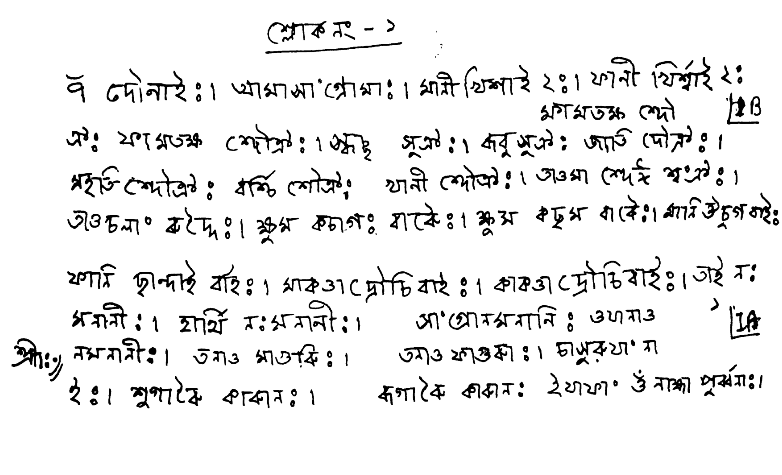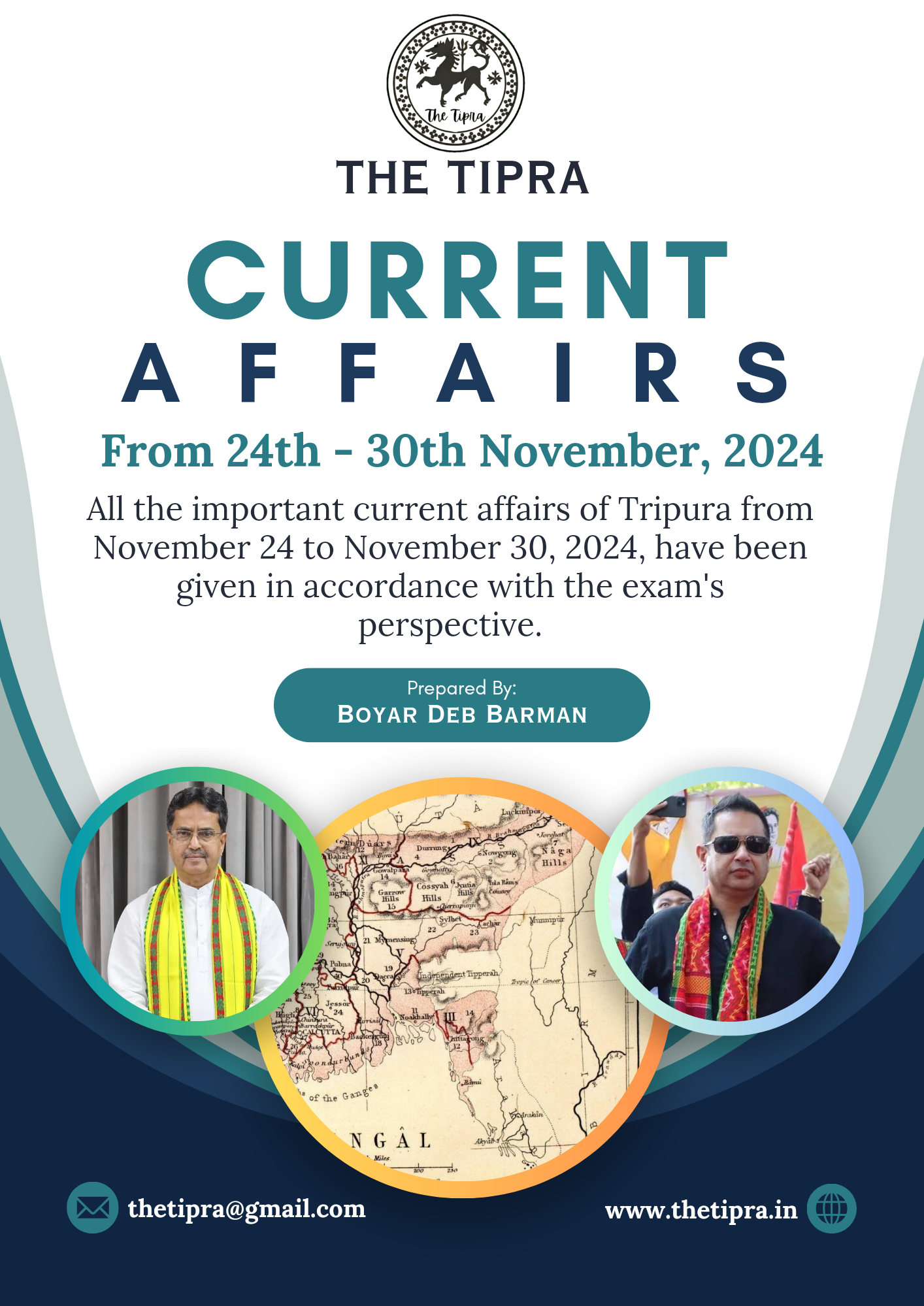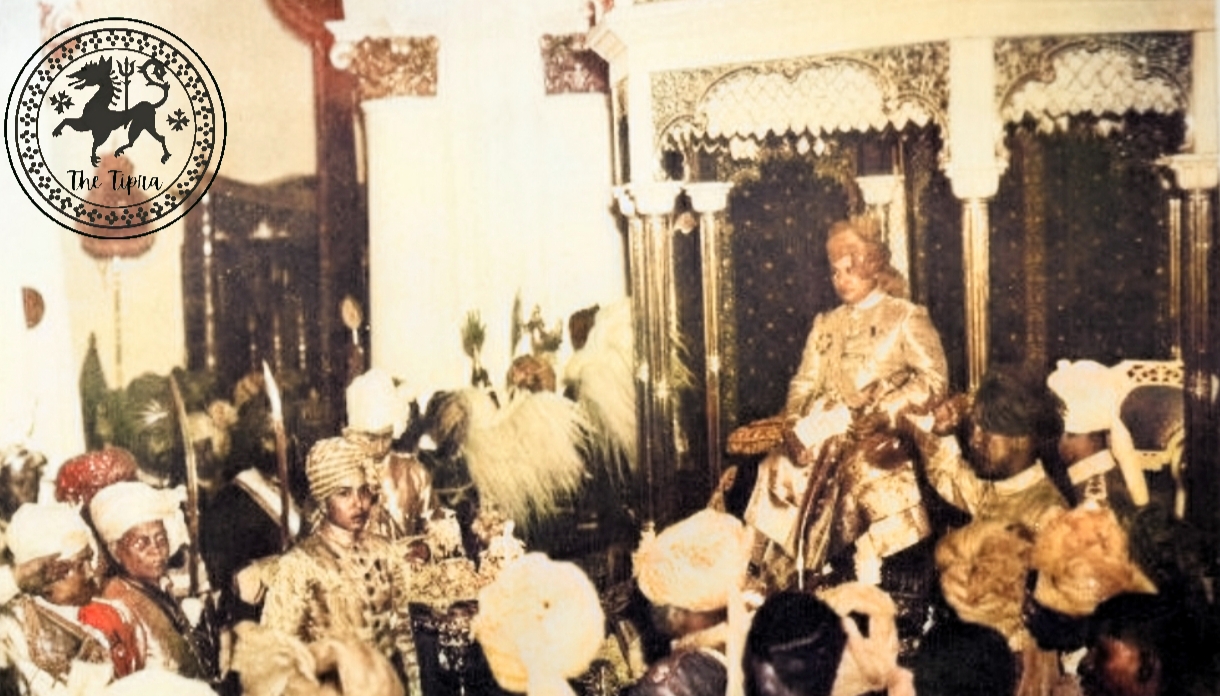
The Introduction of Coinage System by King Ratna Manikya in Tripura
Studying the Tripura kingdom’s monetary structure is quite fascinating. Throughout history, coins have been used to represent various kings and their reigns. A significant emblem to the civilisation or, more precisely, the ruler who made the coins is imprinted on them. Coins are an amazing method of dating. Many coins have a year on them, and those that don’t frequently be dated to within a few years. Consequently, discovering a coin in an archaeological deposit provides an extremely accurate terminus post quem (date after which). Numerous explorers and archaeologists have examined these ancient Indian coins in great detail. Although the language used was Sanskrit, all Tripura coins were struck in Bengali script. Tripura was a mostly Tripuri state (inhabited primarily by the Tripuri tribe) on the eastern border of Bengal. Traditional chronicles Rajaratnakaram and Rajmala claim that Tripura is ancient, going all the way back to the epical eras. However, since there was formerly an oral narrative system, there is no evidence to corroborate this claim. As a result, except from Rajmala, there is no material or documentation to help one trace the older history.
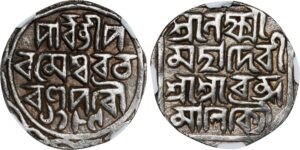
The first recorded history of dynastic rule dates back to Dangar Fa’s reign, when the princes engaged in a power struggle for the crown. One of them, Ratna Fa who ruled the kingdom of Tripura from 1464 – 1489 CE. He went to Gaud to ask for help after failing to succeed. With the assistance and encouragement of the Sultan of Bengal, he eventually succeeded in regaining his kingdom after spending some time there. The numismatic history of Tripura began with King Ratna Fa, who received the title “Manikya” after he presented the rare stone found in Kailasahar. It was he who established the coinage system in his kingdom.
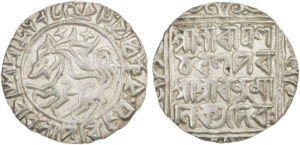
The first ruler of Tripura to strike coins was King Ratna Manikya (Shaka 1386). His coins are strikingly similar to the coinage of the Bengal Sultanate during that era in terms of both design and weight standards. Aside from the ornamental similarities, King Ratna Manikya’s coin’s inscriptioned linear lion was taken straight from Sultan Nasiruddin Mahmud’s coinage, the ruler who most likely provided him with assistance. It would be reasonable to assume that King Ratna Manikya imported the technology of minting from Bengal because there is no documentation of coinage prior to his reign. The lion mark represents strength and serves as the goddess Durga’s vehicle. It was possible but not quite impossible that King Ratna Manikya included it on his coin as a way of expressing his appreciation to the sultan. On the other side, it could be the expression of the blossing of Goddess Durga. Moreover, it could be said that the Chaturdashdevta coins of King Ratna Manikya, which have fourteen vertical lines with a garland surrounding them, resemble the tughra inscription on the Sultani coins. His liberal views regarding religion are evident in the religious invocations found in the epithet of his coins, which include Parvati Parameshvara Charana parau, Shri Durga Radha Napta Vijaya Ratnapure, Shri Narayana Charana para, and Shri Chaturdasha Deva Charana para, among others. The coin’s inscription reads “Shaka 1386.” Most likely, this was the year he was installed. Ratnapura, the location indicated, may have served as his capital. It’s someplace close to where Udaipur is now.
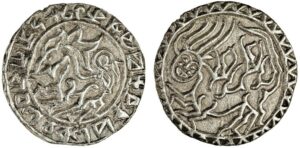
Still, the name of King Ratna Manikya’s Queen, Laksmi Mahadevi, on the coin is the most remarkable aspect of his coin. This became a custom followed by all the kings that came after. There are only five instances in this subcontinent’s whole numismatic history where the Queen’s name appears on a coin with the King’s. This is primarily due to the Queen’s dominance during that specific period of time. However, there is no indication that the Queen used her unique authority in the case of King Ratna Manikya. This was an odd phenomena that neither social scientists nor numismatists could explain.
